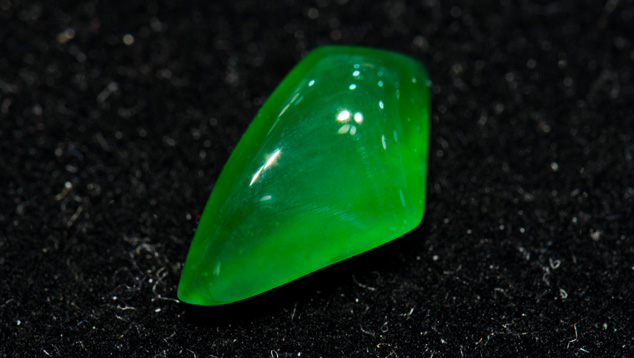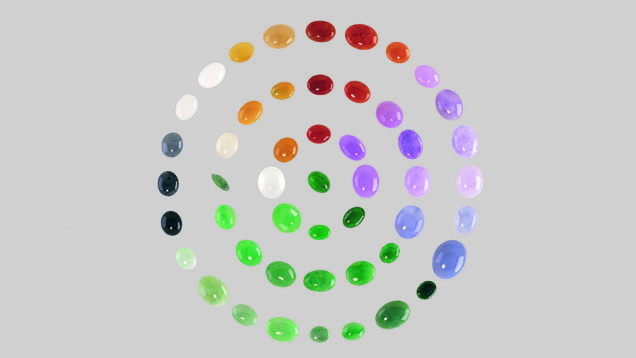
To understand the value of jade, you have to look beyond its durability and its role as a gemstone and beautiful adornment. Jade is a spiritual stone with significant meaning that’s intricately woven into the Chinese culture.
The price for fine-quality jadeite has risen dramatically along with China’s economic rise. The demand from those who can newly afford it has significantly outpaced the supply of this rare material.
The Chinese have revered jadeite’s fine green color since its discovery in Burma. Top-quality jadeite is rare. Vivid, sleek, and translucent, magnificent jadeite commands some of the highest prices among gems in today’s international market.
Jadeite’s three most important qualities, in order of their impact on its market value, are color, transparency, and texture.
When jadeite buyers evaluate fashioned jadeite, they consider many factors. First, they judge its color under both fluorescent and incandescent light sources. They check its level of transparency. They look for even coloration or a pleasing mottling of colors. They also look for fine polish and undistorted surface reflections. Clarity is important, too, because any fractures can strongly affect value.
Color
Color is jadeite’s most important value factor. Because consumers traditionally associate jadeite with the color green, it surprises some people to learn that it comes in other colors as well—lavender, red, orange, yellow, brown, white, black, and gray. All of these colors can be attractive. But jadeite’s most desirable color is, in fact, a very specific shade of green.

Jadeite jade comes in a variety of colors. Green is the most valuable. - Courtesy Mason-Kay Fine Jade Jewelry
The finest-quality jadeite—almost transparent with a vibrant emerald-green color—is known as “Imperial jade.” The royal court of China once had a standing order for all available material of this kind, and it’s one of the world’s most expensive gems.The green that can command millions of dollars in the marketplace is pure and penetrating, a vivid hue with no hint of gray that looks intense even from a distance. It ranges from pure green to a slightly bluish green or a slightly yellowish green.
Other highly valued jade varieties include “kingfisher jade,” with a green color that’s only slightly less vivid than Imperial; “apple jade,” which is an intense yellowish green; and “moss-in-snow jade,” which is translucent white with bright green veining, patches, or spots. The most outstanding examples of these are almost always bought and sold in the Asian market.
Lavender is the next most valuable color. Intense colors command a substantial premium over lighter and weaker colors. Black jade is also popular, along with orange to reddish jade, especially when these colors are not brownish.
Transparency
Jadeite’s transparency ranges from completely opaque to semitransparent. The best jadeite is semitransparent, meaning the text you can read through it would be slightly blurred. Because light penetrates below the surface, semitransparent jadeite has an alluring brilliance. It almost appears to glow, increasing the charm of a lush green or rich lavender hue. The least desirable jadeites are completely opaque or have opaque or cloudy patches that break up their transparency.